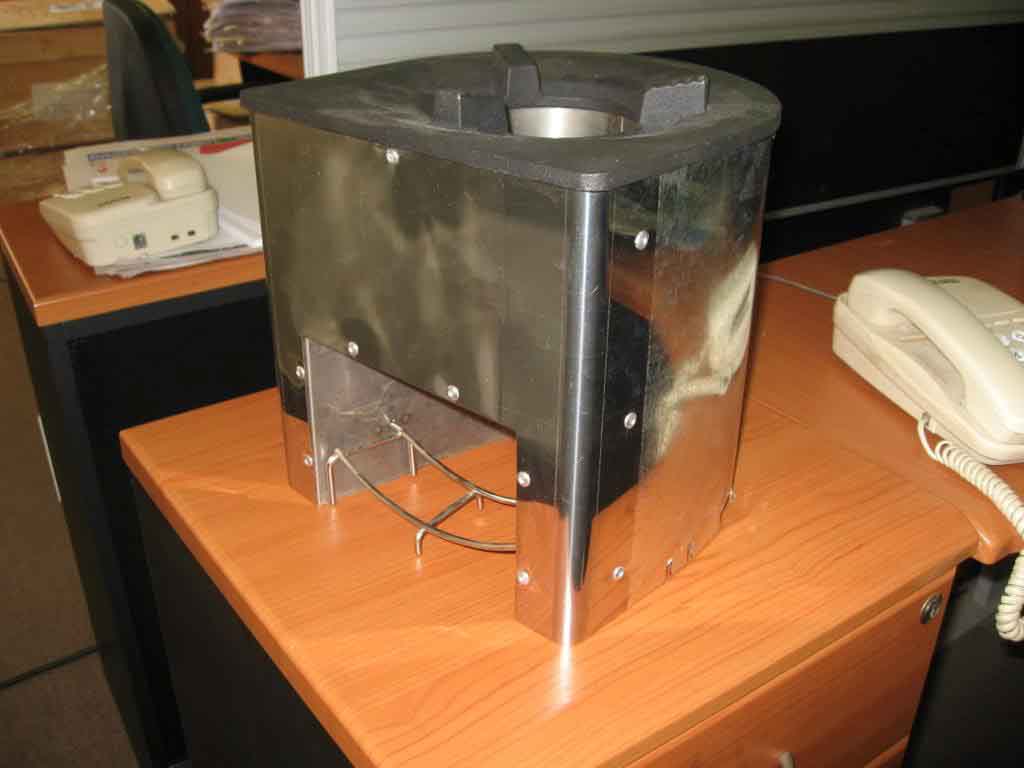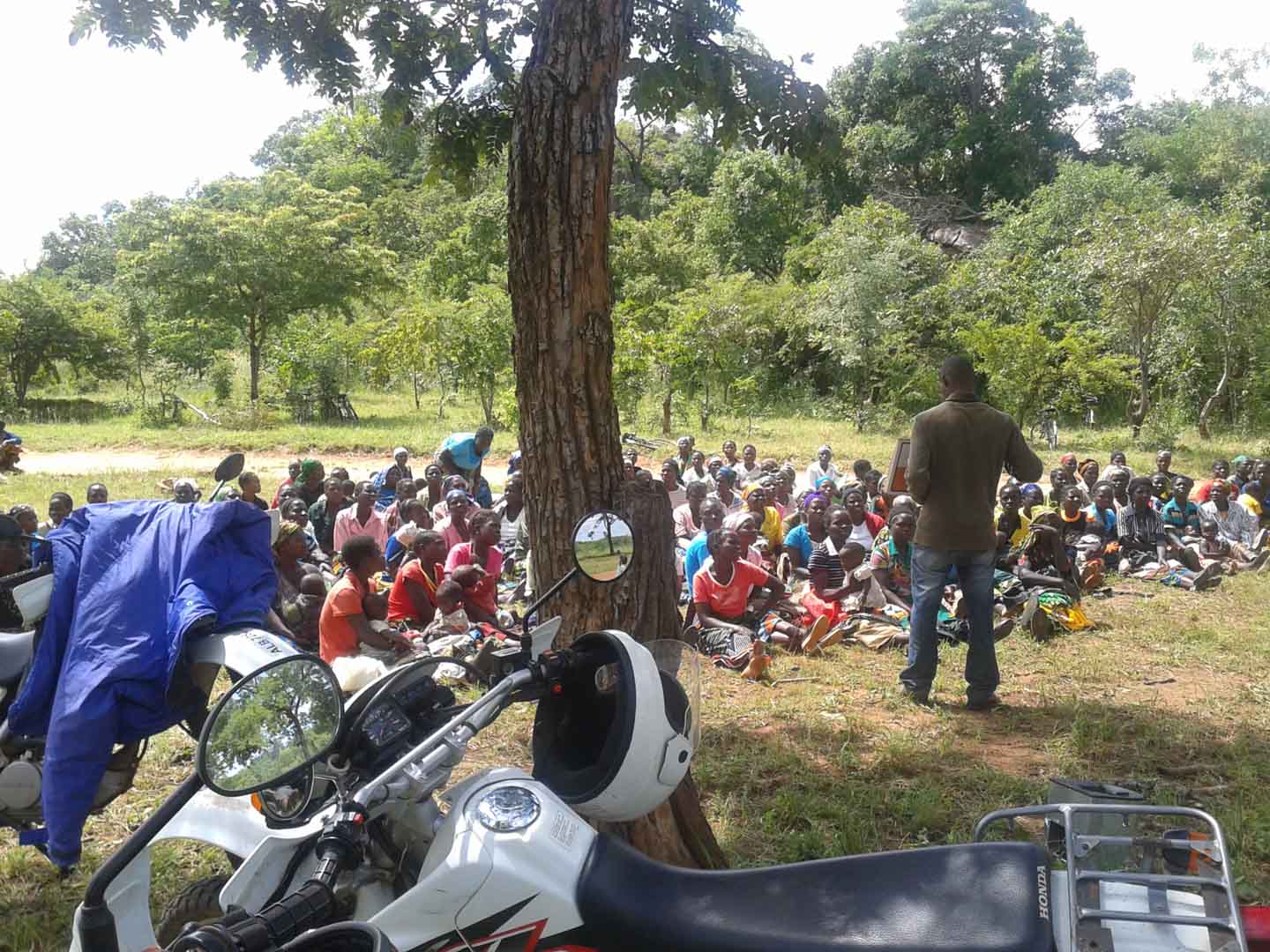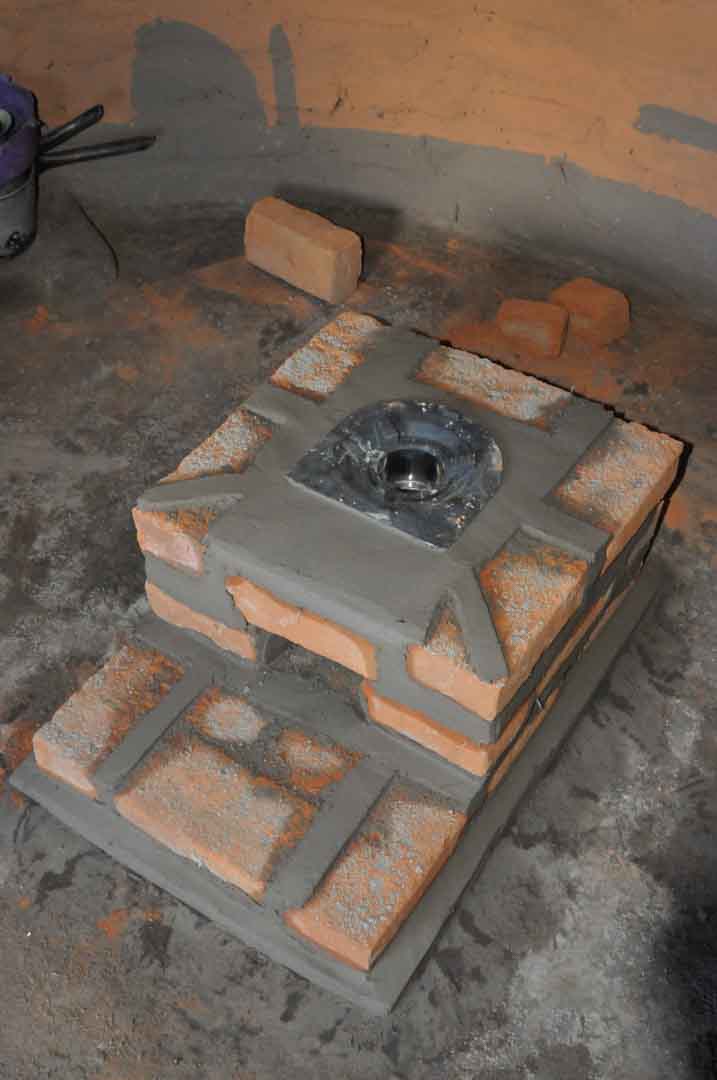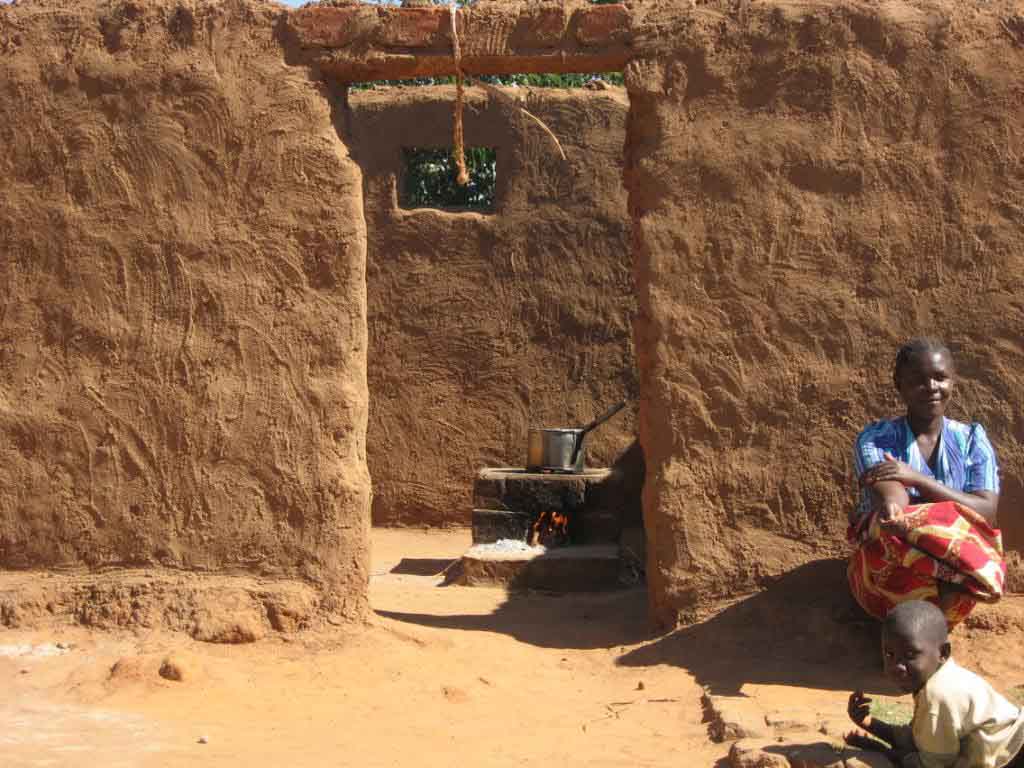Efficient cooking in Zambia
This project saves greenhouse gas emissions by giving families in eastern Zambia access to efficient cooking methods.
Traditionally, most families in Zambia cook on three stones over an open fire. A lot of energy is lost without any use and cooking as well as gathering firewood is very time-consuming. In addition, there are harmful pollutant emissions and accidents with burns. The new furnaces have an insulated combustion chamber and are covered with brick stones. On average, they use 50 percent less firewood, thus saving time and money. Thanks to the carbon finance, the stoves are sold at a subsidised price and even the poorest households can afford them. A project team explains the advantages of the new stoves to the families and supports them in switching from the traditional to the new cooking method. So far, some 40,000 households and 200,000 people have benefited from the project.

According to a statistic from the World Health Organization (WHO, 2024) around a third of the global population still relies on unsafe and environmentally harmful cooking methods. This includes, for example, cooking over open fires or using polluting cooking fuels, such as coal or kerosene. Improved cookstoves tackle this problem by using thermal energy more efficiently.
Depending on the model, an improved cookstove can reduce fuel consumption by up to 70 percent, which significantly saves CO2 emissions and can lower the pressure on local forests as less firewood needs to be harvested.
Improved cookstove projects allow the distribution of the - often simple - devices made from metal or clay to households, small enterprises or community facilities. Especially for households, this has an impact beyond the CO2 reduction: better indoor air quality decreases respiratory diseases and families can save time and money as less fuel is needed. Improved cookstoves projects in the ClimatePartner portfolio are registered with international standards.
Explore our projects
Biochar for Climate Action, Healthy Soils, and Better Harvests

A certified climate project combined with additional commitment

Expansion of renewable energy generation in Asia

Ceramic water filters save CO2 and improve health

Improved cookstoves worldwide – for better health and cleaner air

A certified climate project combined with additional commitment

Powering access to renewable energy in Africa

A certified climate project combined with additional commitment

Restored ecosystems remove carbon

Turning degraded farmlands into healthy ecosystems

Improved cookstoves - better for health and the environment













































